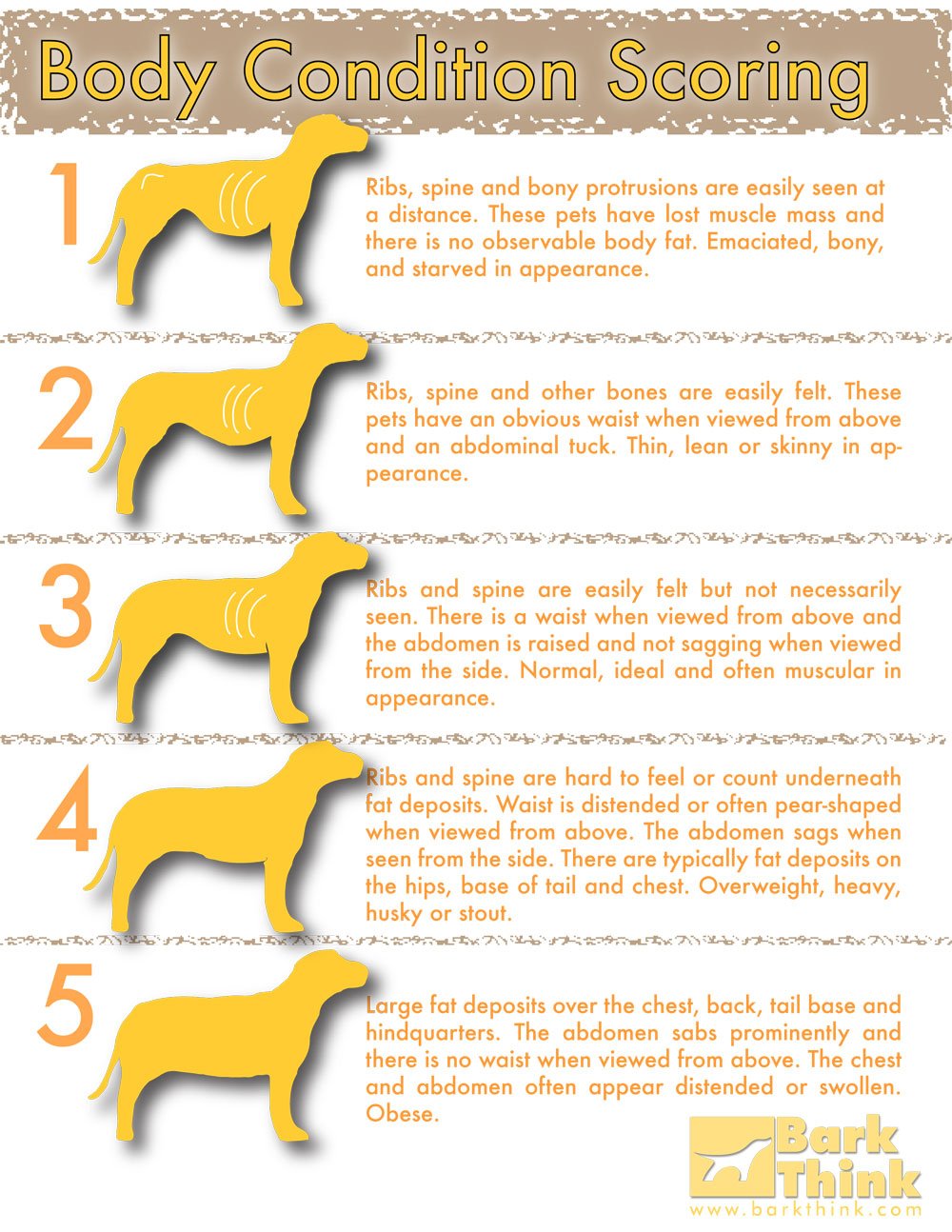Like all animals, the nutritional needs of dogs vary at different stages of life. As puppies, dogs require a high amount of nutrients because of the rapid growth that occurs during the first few months of life. On the other hand, senior dogs typically require less energy (food) due to their slower metabolism and decreased activity level.
Your dog’s energy (calories) needs to maintain a healthy weight for his life stage depends upon several factors. First, we need to determine your dog’s Resting Energy Requirements (RER)—this is the minimum amount of calories necessary for your dog to perform essential body functions such as respiration, heart functions, temperature regulation, brain functions, digestion, etc. The RER can be calculated by multiplying your dog’s body weight in kilograms raised to the ¾ power by 70.
For example, a healthy 11 lb (5 kg) adult dog would have a RER requirements of = 70(5 kg)3/4 ≈ 234 calories/day.
Next, the RER caloric amount is then multiplied by corresponding factors to estimate your dog’s total daily energy needs (See Table 1). Keep in mind, these calculated estimates can vary by as much as 50% from your dog’s individual needs. However, these values serve as excellent starting points for estimating the amount of food to be provided daily. From there, the amount of food can be adjusted up or down as needed in order to maintain a healthy weight and reasonable body condition score.
| Table 1. Known life stages and corresponding factors used to estimate daily energy needs for dogs. | |
|---|---|
| Puppy, 0-4 months | = 3.0 x RER |
| Puppy, 4 months to adult | = 2.0 x RER |
| Neutered adult | = 1.6 x RER |
| Intact adult | = 1.8 x RER |
| Inactive/obese prone | = 1.2 – 1.4 x RER |
| Weight loss | = 1.0 x RER for ideal weight |
| Weight gain | = 1.2 – 1.8 x RER for ideal weight |
| Active, working dogs | = 2.0 – 5.0 x RER |
As mentioned, these calculations only provide a general “baseline” estimate of your pet’s calorie needs, which can vary depending on time, circumstances, and breed.
For example, some dog breeds inherently require more or less energy such as a Jack Russell Terrier versus a Old English Bulldog. Although both are similar in size, the highly active nature of the Jack Russell Terrier compared to the laid-back nature of the Old English Bulldog can result in very different energy intake needs to maintain a healthy body condition.
Therefore, in the long term, you should adjust the food provided to your dog to keep him at a moderate and healthy body condition score according to the Dog Body Condition Scoring chart shown:

Dog Protein Needs
Another popular method to used by veterinarians to determine your dog’s health is the Muscle Condition Scoring chart provided by the AAHA which also determines whether your dog is receiving enough protein for his well-being. Dogs utilize protein as a source of amino acids they cannot produce themselves, protein combining to optimize amino acids proportions, and nitrogen balancing to fuel proteins they can make. Insufficient amounts of protein (and a number of other nutrients) consumed can result in result in lower skin and coat quality.




